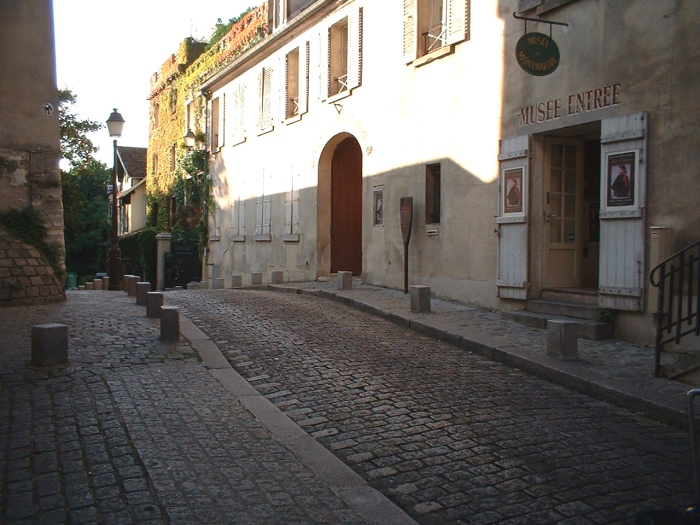
Paris during Summer is a dead city. The Parisians are all gone on holidays and the streets are empty. Actually, they’re not that deserted. The tourists are here. By seeing them, I guessed that my opinion of Paris was not the same as theirs. So I tried to see my town with their point of view. I have to say, it is not that bad. Paris can be the cliché of the romantic and artsy capital depicted into many movies. What opened my eyes on this standpoint? The Musée de Montmartre and its temporary exhibition on the cinema shot in Montmartre. This cultural escapade entertained me for 3 hours (while it was pouring outside) by bringing me two of my favourite things: Paris and Cinema.
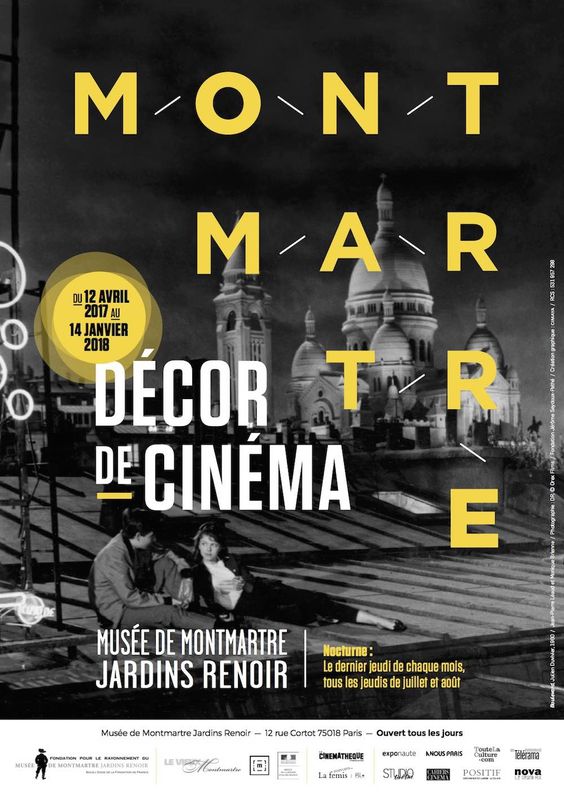
The museum is a country house in the middle of the French capital. It is remarkable to find such a place in a shifting town like Paris. It has three bucolic gardens in which you can reconstruct the image of the artists that used to work there such as Renoir, Suzanne Valadon, Maurice Utrillo, André Utter and their friends from the Belle Epoque. The museum has many archives from the time. It recreates and shows us the historical evolution of the quarter of Montmartre since la commune to nowadays.
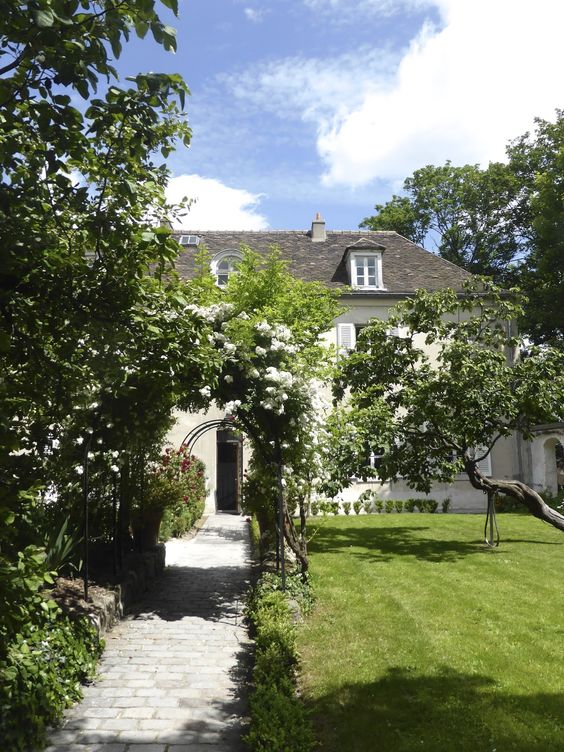
As a Parisian, I have to say that I learnt so much about a city in which I lived for many years… I felt simpleminded in front of all these information (Montmartre used to be a suburb of Paris with fields and vineyard everywhere!).
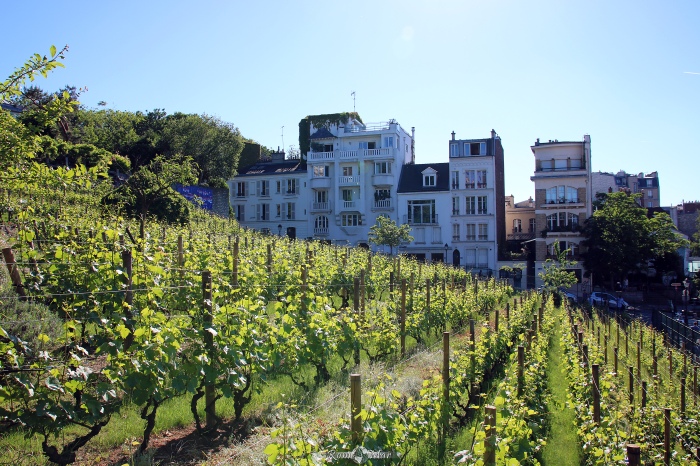
The museum gives you the possibility to fight with the communards, to feel the ambiance of the cabarets and guinguettes (little balls in the streets), but also to know more about the architectures and monuments such as the Sacré Coeur‘s history. The free audio-guide is the key to the visit. The explications are not really long and quite well resumed to be understood by everyone (even for not Parisian visitors ;)).

The visit is playful with music (audio-guide) and really well pictured. You have original posters from cabarets such as the famous Chat Noir made by Steinlein, The Lapin Agile drawn by Gill or even the reputable Moulin Rouge. In a nutshell, this museum will bring you back to the 19th Century to spend a night with Aristide Bruant (the respected owner of the cabarets) and the intellectuals of the time such as Picasso, Apollinaire, Modigliani… I felt like Gil Pender (Owen Wilson) in Woody Allen’s film, Midnight in Paris (2011): a time travel experience from the 21st Century to the Belle Epoque.
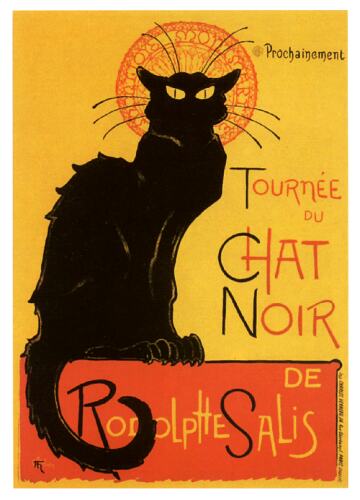
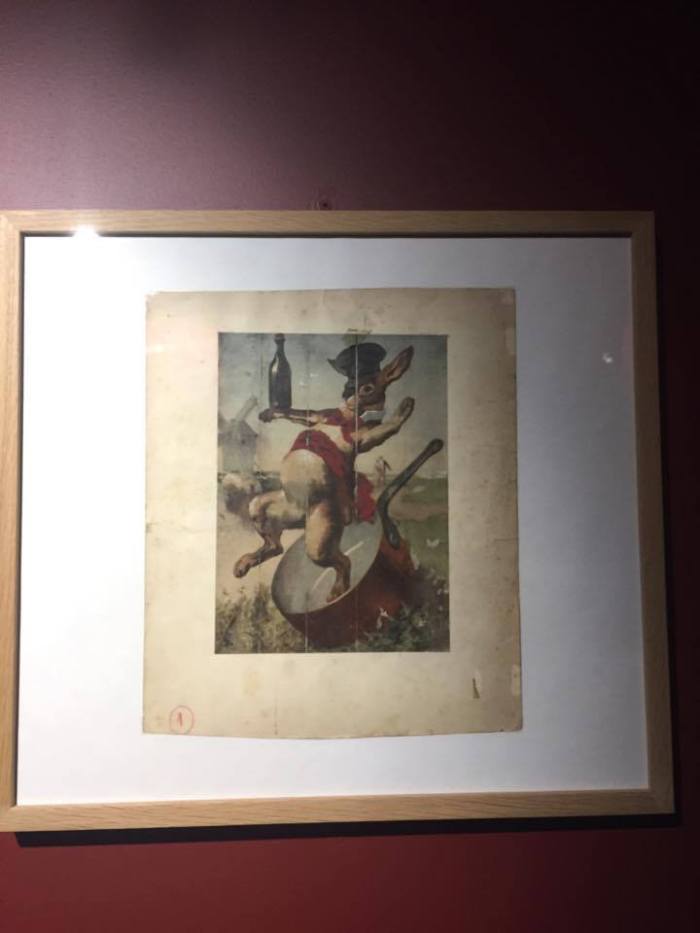
After this captivating episode, I went to the temporary exhibition called ‘Montmartre décor de Cinema.‘ It was in the other house of the country home.
Montmartre has always been an inspirational place for artists and it goes without saying that when cinema appeared it had to make its own cultural path in the 18th arrondissement of Paris. Years after years, about one thousand films have been shot in Montmartre. The exhibition picked some of them from the silent era to the digital to refresh our memories and show different visions of the quarter. It is evolving throughout time during the visit and by selecting them in accordance of their common places. For instance the Moulin Rouge is depicted throughout decades with extracts from films such as Bibi la purée (1935) to Paris by Klapisch (2008).
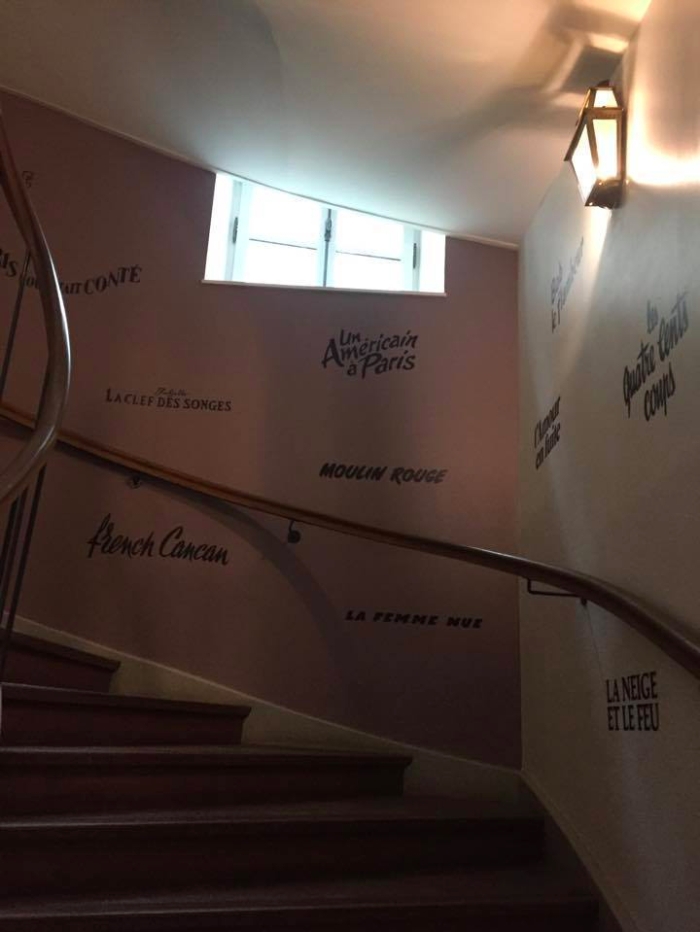
Obviously, Truffaut is mostly in every room which puts Jean-Pierre Leaud’s evolving career throughout years at the top of the bill. Indeed, extracts from the 400 coups (400 Blows, Truffaut, 1959) to Baisers Volés (Stolen Kisses, Truffaut, 1968)but also L’amour en fuite (Love on the run, Truffaut,1979) or Boulevard (Julien Duvivier, 1960).. Jean-Pierre Léaud is represented as the icon of the French Wave and the authentic Parisian film’s emblem due to Antoine Doisnel role. He was given the Honorary Palme D’Or at the 2016 Cannes Film Festival which testifies from his impact on the French and most of all Parisian cinema.
However, other symbolic films and directors are represented such as Marcel Carmé with Juliette, or key of dreams (Juliette ou la clé des songes, 1951), The Gates of the Night (Les Portes de la Nuit, 1946) or the mythical Children of Paradise (Les Enfants du Paradis, 1945). But if the oldest directors are represented, the exhibition does not forget the films that will create the future heritage such as the memorable Amelie (Le Fabuleux destin d’Amélie Poulain, Jean-Pierre Jeunet, 2001), The Science of Sleep (La Science des rêves, Michel Gondry, 2006) with the incredible Charlotte Gainsbourg, Jean-Paul Rouve’s film Memories (Les Souvenirs, 2014) or Midnight in Paris (Woody Allen, 2011).
On top of that, the exhibition brings you to the films’ backstage with original scripts, objects from the film or even pictures/ places that gave inspiration to the directors. You really have the impression of being at the heart of the filmmaking while taking into account the previous movies that could have inspired the most recent ones.

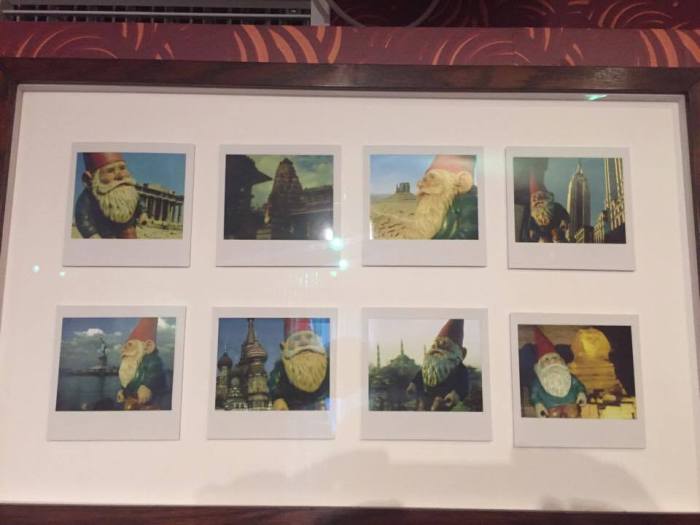

Moreover, if the exhibition is about the Montmartre’s decor in films, it has itself some good spots and props that gives an ambiance to the visit. For instance, benches just like the ones on the Parisian streets are placed to vision the films’ extracts; access to Suzane Valadon’s atelier is given (which was my favourite place since they are no limits or barriers, you feel like she just left the room). The music played between the rooms takes you to different periods of time with no hard transitions. So let yourself be carried away by the seventh art’s evolution that will offer you surprises.
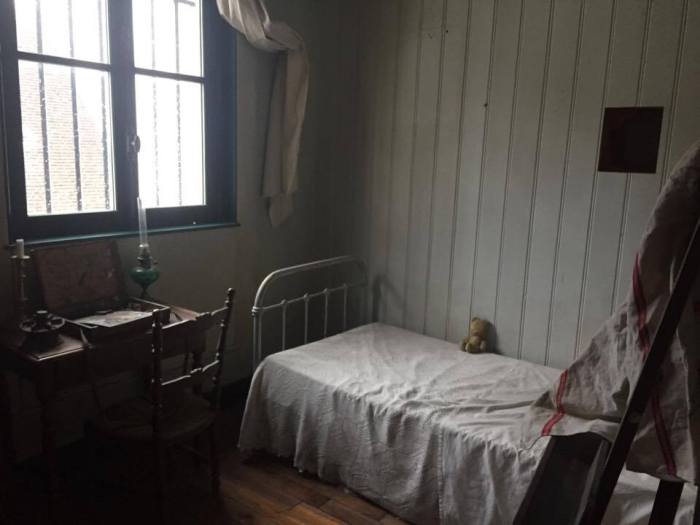


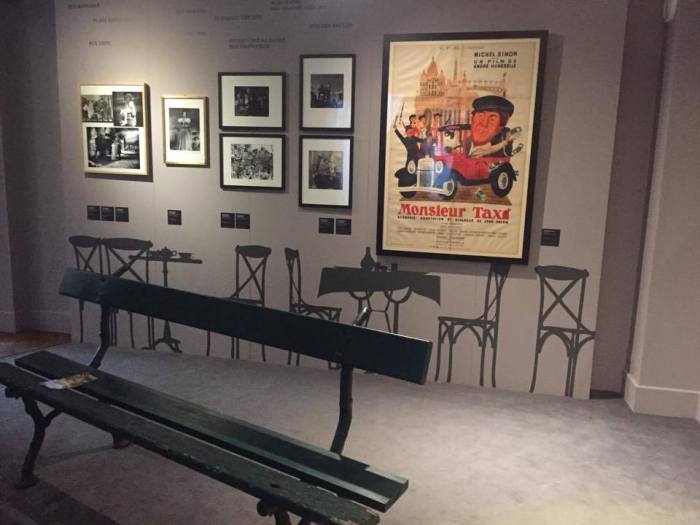
An American friend asked me what films she should watch in order to understand the French cinema. I have to say, I didn’t really know what to answer, where to begin. So now, she’ll understand where everything began and what brought the current directors to today’s films inspired by decades of work and evolution.
The exhibition will be running until the 14th of January 2018.







